Lisa Brunette and her husband Anthony Valterra don’t like to waste time or effort. So it’s no surprise that after less than three years, their yard received top honors in the St. Louis Audubon Society’s Bring Conservation Home (BCH) program.
This is an excerpt from the Wild Ones Journal
Current members can log in to read the latest issue or check out the Journal Archives.
Lisa says they were awarded platinum certification in spring 2021, a status achieved by fewer than 2% of all gardens enrolled in the program. The two purchased their Maplewood, Missouri home on a ¼-acre suburban lot in 2017, when Lisa moved back to the St. Louis area after living nearly two decades in the Pacific Northwest, where she met Anthony. Then, in fall 2019, BCH did an assessment of their yard. The BCH recommendations served as their inspiration and gave them good ideas on how to proceed.
“They were able to identify what we should take out and what we might want to put in,” Lisa says.
But they don’t design it for you, Anthony stresses, saying the two are entirely self-taught. “Lisa read every [Doug] Tallamy book and together we attended a lot of Wild Ones events and tours.” And as they learned, their vision of what could be slowly came into focus.
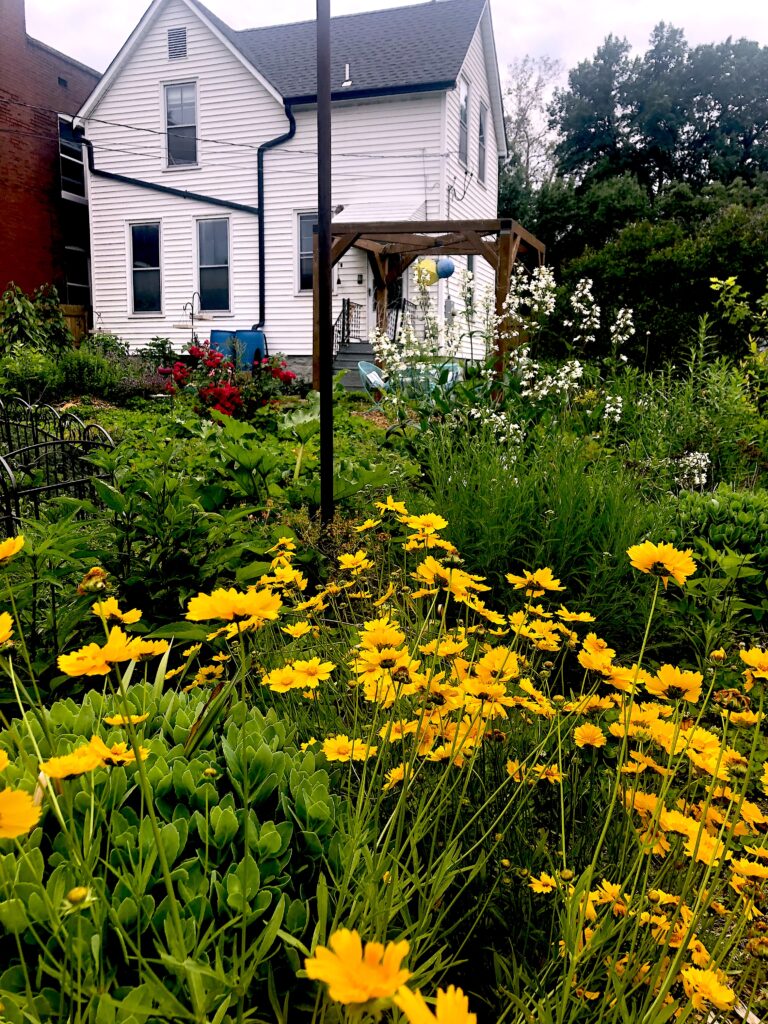
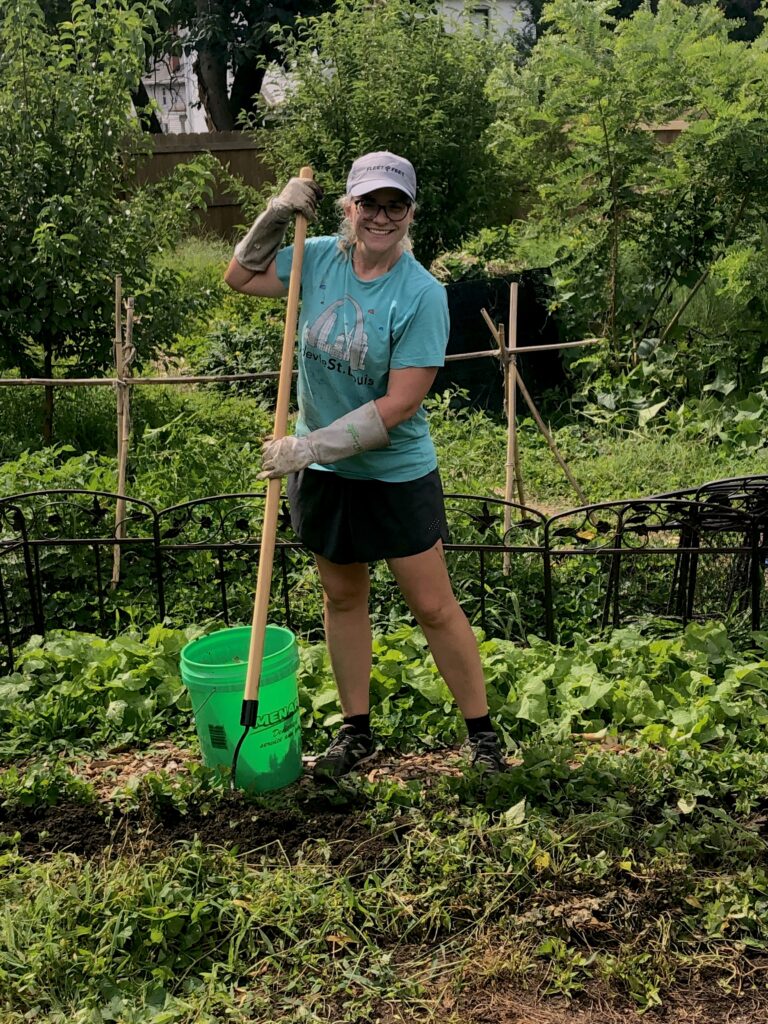
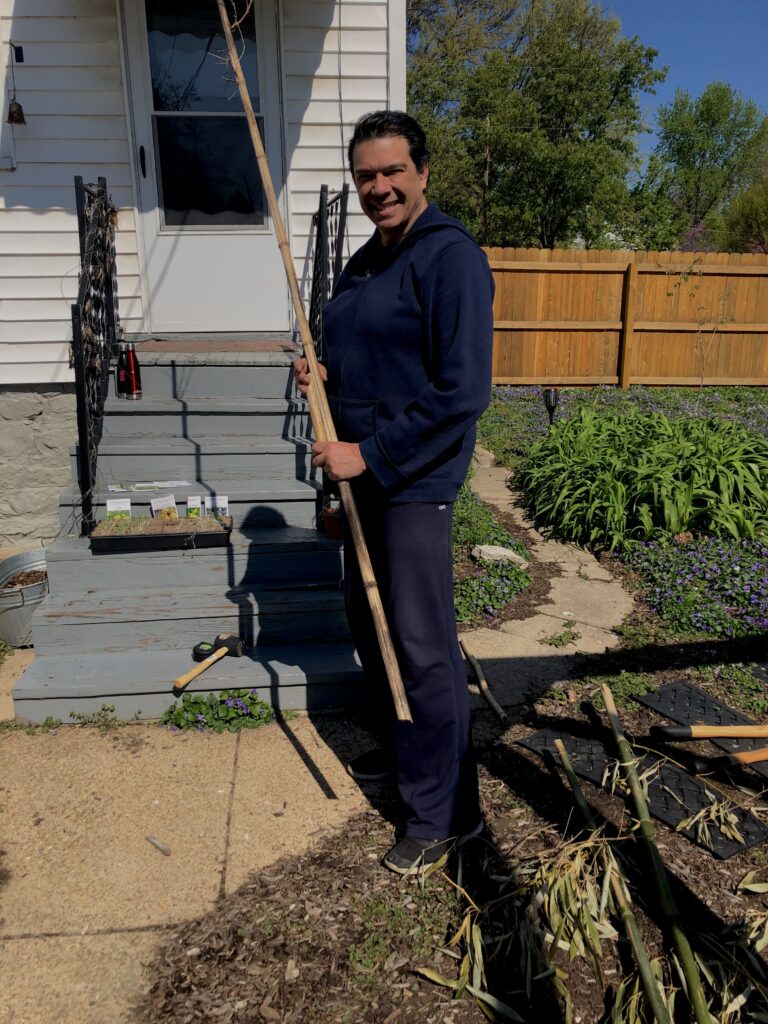
Working within a budget, they also took advantage of free or low-cost plants and seeds, many from Wild Ones members, Anthony says.
“We have removed invasive plants covering the property and planted close to 150 species of native trees, shrubs, flowers and grasses, including a rain garden, forest canopy and rocky glade areas,” Lisa says. Their garden features a rock habitat for snakes and lizards, a brush area where Eastern cottontail (Sylvilagusfloridians) have nested in the past, edible native fruit and nut trees, oak, black gum, a bat house, bird baths and feeders, and a native groundcover mix of violet and geranium in place of turf.
But that’s not all. They also conserve water through a rain barrel collection system.
Lisa says they did the majority of the work, only hiring out for projects too big to do themselves, like removing a perimeter chain link fence covered in invasive honeysuckle and winter creeper, or planting a row of mature eastern red cedars (Juniperusvirginiana) along their fence line.
They started landscaping with trees and shrubs, as well as sheet mulching to remove the backyard lawn, she says. (Check out their blog to see how they did it.) Once the grass had been replaced with a groundcover mix of native violets and geraniums, they started adding native grasses and flowers.
Lisa admits that she’s a nerd when it comes to planning, and her husband is the muscle and contributor. “She’s more plant-oriented and I’m more landscaped-oriented,” Anthony explains.
They say they’ve made some mistakes along the way, especially as they became reacquainted with four seasons and plants going dormant in the winter.
“Winter creates such a drastically different landscape and it’s easy to forget where things are,” Lisa says, adding that they accidentally pulled out things like milkweed that were mistaken for weeds in the spring.
To avoid future mishaps like that, they’ve learned to communicate better about what they’re editing out. It helps that from the beginning, Lisa kept a garden journal, but she said they don’t always think to check it when they’re working in the yard.
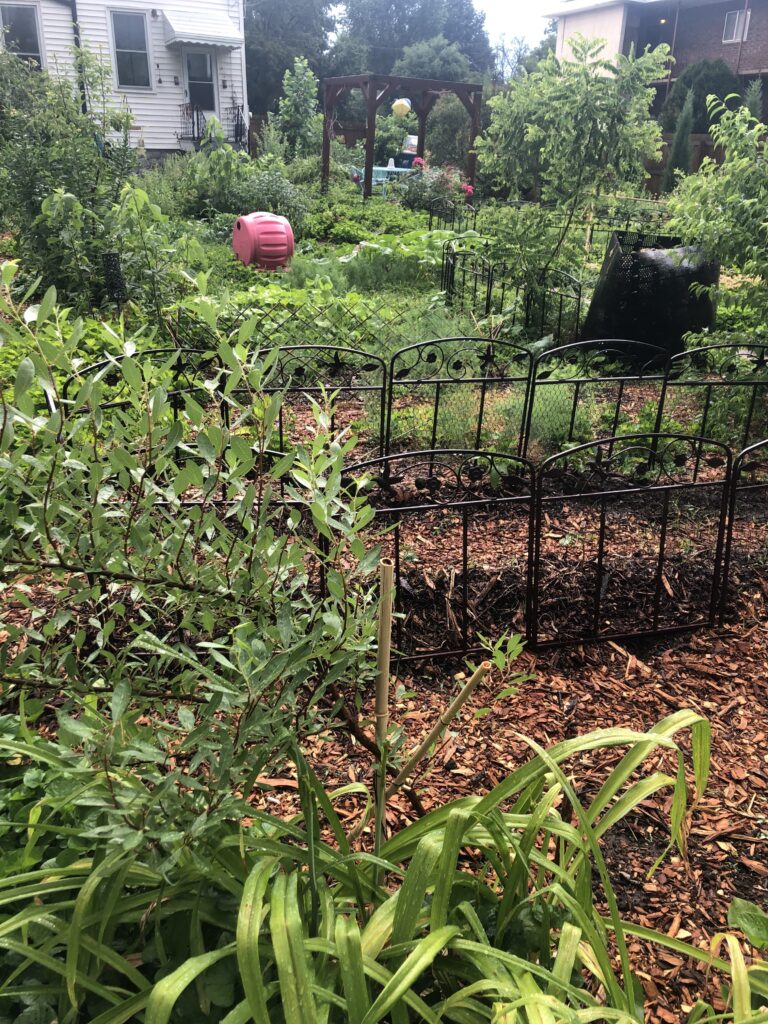
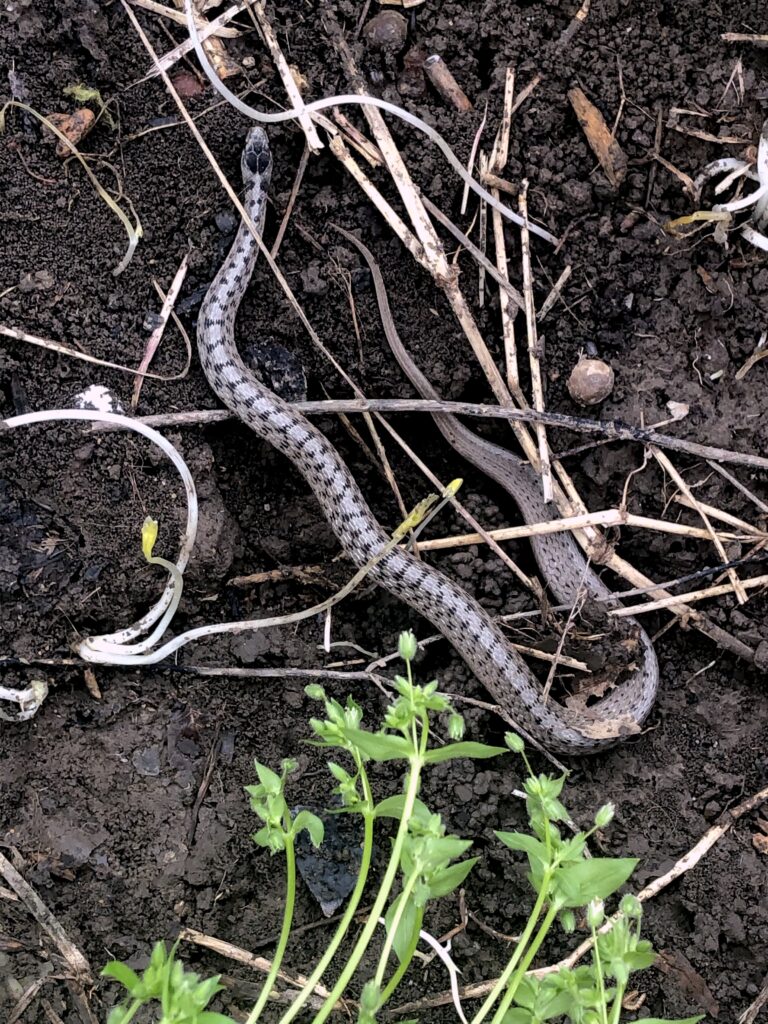
secretive species that prefers a moist environment.
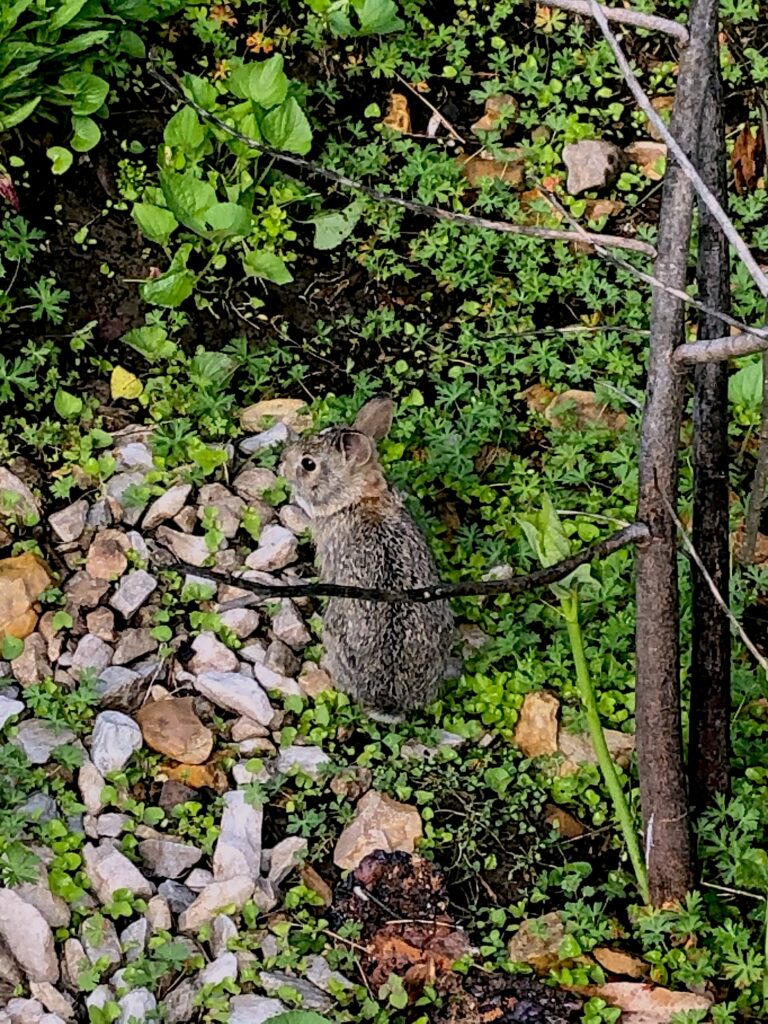
These rabbits are native to much of the eastern United States.
Their yard also includes a food garden located near the kitchen, but native plants are woven throughout their property, Lisa adds, noting that a good portion of their food comes from their garden. They’ve added pawpaw trees, elderberries, blueberries, raspberries, persimmon trees and native herbs, just to name a few native edibles.
The only grass on their property is in the front yard, and they’ve kept it because they were unsure if the neighbors were ready for a grass-free landscape. Still, the grass is the smallest portion of their lot and eventually, it will go, too.
For those new to native landscaping, the two would encourage people to do lots of research, join Wild Ones and take advantage of programs like the BCH.
“St. Louis is amazing for having resources available for little or no cost,” Anthony says. “Get recommendations, find helpful references…” and figure out what you want to do.”
In fact, they’re still figuring out what they want to do with some areas of their property.
“In the front yard, a bunch of azaleas need to come out,” Lisa says. Anthony adds: “You’re never done. It’s a process like life. Something is always growing or dying…”
“Gardening is a bit like swimming,” Lisa says. “You can read many books about swimming, but until you get into the water, you don’t know anything. Gardening is like that. There will always be plants that you think will work well in your yard and don’t. You’re always learning and experimenting.”
Overall, their neighbors have been receptive to the changes they’ve made in their yard. One neighbor, an arborist, helped his landlord remove an invasive tree of heaven, replacing it with an oak, which extends their native habitat by one more yard-length. And with apartments on both sides of their home, their other neighbors enjoy looking down at the view.
But they also try to educate those who don’t understand what they are doing and why.
“We had a landlord on the other side spraying chemicals along our fence line,” Anthony recalls. “We were friendly and told him we were eating plants on the other side of the fence, even offering him free mulch.” The landlord listened, and they’re hopeful he got the message.
Lisa says that native plant gardening is proof that “if you build it, they will come.”
“I think most people would be amazed at the rich diversity in wildlife and the insect world you can attract, even if you’re in a suburban metropolitan area like ours,” she says. “I’ve identified hanging robber flies, stilt bugs, leafhoppers and many different beetles. We’ve had encounters with opossums, racoons, chipmunks and whole families of rabbits.”
Anthony and Lisa are full-time small business owners and Gen Xers who maintain their gardens despite their busy lives.
“For us, gardening is exercise, therapy and nature bathing, all rolled into one,” Lisa says. “For me in particular, it’s a great passion, the second love of my life after Anthony and our family.”
Written by Barbara A. Schmitz.
